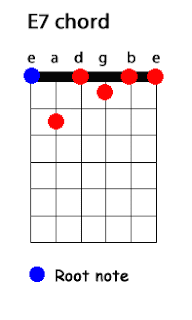What's up future rock-stars!!!
In this lesson we are going to take a look at the single most important scale you will ever learn,
the Major Scale.
What makes the Major scale so important is that pretty much every other scale is based on it, or has a close relation to it. This should already be clear to you if you've read the Minor Pentatonic lesson. And it will become even clearer when we start discussing Modes.
Theory
The Major Scale is a diatonic scale, meaning it contains 7 notes. Those seven notes are divided by a strict interval structure. An interval is the distance between the frequencies of two notes. For example, there is a half-step interval between A and A#, but a full-step interval between A and B.
The interval formula for the major scale is very simple, it goes: W-W-H-W-W-W-H
W = a whole step, or full-step, H = a half-step.
This formula will help you identify the notes of each of the 12 major scales. As an example I will show you the C Major Scale. First off, here are all the notes on the guitar:
A – A#/Bb – B – C – C#/Db – D – D#/Eb – E – F – F#/Gb – G – G#/Ab
To find the notes of the C Major Scale, we will first re-order the notes so that C is the root.
C – C#/Db – D – D#/Eb – E – F – F#/Gb – G – G#/Ab – A – A#/Bb – B
Now all that is left is to apply the interval formula: W-W-H-W-W-W-H
And we get the notes: C D E F G A B
You can do the same for the other ones if you are interested in seeing the small differences between the different keys, which key contains which sharps and flats, etcetera.
G Major for instance differs from the C Major scale with only one note: G A B C D E F#
Practice
Alright, enough theory, let's get to the real interesting bit, applying the scale to guitar.
We are going to do this in the exact same way as the Minor Pentatonic. The fretboard will be divided into 5 scale patterns or positions. You have to learn the first pattern up and down, then improvise a bit with it, learn the next pattern, include that in your improvisation and so on until you have learned it entirely. Then you start practicing it in different keys as well.
In this lesson we are going to take a look at the single most important scale you will ever learn,
the Major Scale.
What makes the Major scale so important is that pretty much every other scale is based on it, or has a close relation to it. This should already be clear to you if you've read the Minor Pentatonic lesson. And it will become even clearer when we start discussing Modes.
Theory
The Major Scale is a diatonic scale, meaning it contains 7 notes. Those seven notes are divided by a strict interval structure. An interval is the distance between the frequencies of two notes. For example, there is a half-step interval between A and A#, but a full-step interval between A and B.
The interval formula for the major scale is very simple, it goes: W-W-H-W-W-W-H
W = a whole step, or full-step, H = a half-step.
This formula will help you identify the notes of each of the 12 major scales. As an example I will show you the C Major Scale. First off, here are all the notes on the guitar:
A – A#/Bb – B – C – C#/Db – D – D#/Eb – E – F – F#/Gb – G – G#/Ab
To find the notes of the C Major Scale, we will first re-order the notes so that C is the root.
C – C#/Db – D – D#/Eb – E – F – F#/Gb – G – G#/Ab – A – A#/Bb – B
Now all that is left is to apply the interval formula: W-W-H-W-W-W-H
And we get the notes: C D E F G A B
You can do the same for the other ones if you are interested in seeing the small differences between the different keys, which key contains which sharps and flats, etcetera.
G Major for instance differs from the C Major scale with only one note: G A B C D E F#
Practice
Alright, enough theory, let's get to the real interesting bit, applying the scale to guitar.
We are going to do this in the exact same way as the Minor Pentatonic. The fretboard will be divided into 5 scale patterns or positions. You have to learn the first pattern up and down, then improvise a bit with it, learn the next pattern, include that in your improvisation and so on until you have learned it entirely. Then you start practicing it in different keys as well.
Again here is an example of all the positions laid out on the fretboard in the
key of G Major this time.
Have fun with it and practice hard. Once you have learned a decent amount of
chords and the Pentatonic scales as well as the Major scale, you will have a
considerable amount of tools to create some amazing songs.If you have any questions, e-mail them to: thenoobguitarist@gmail.com.
Don’t forget to listen and have fun!!!

























